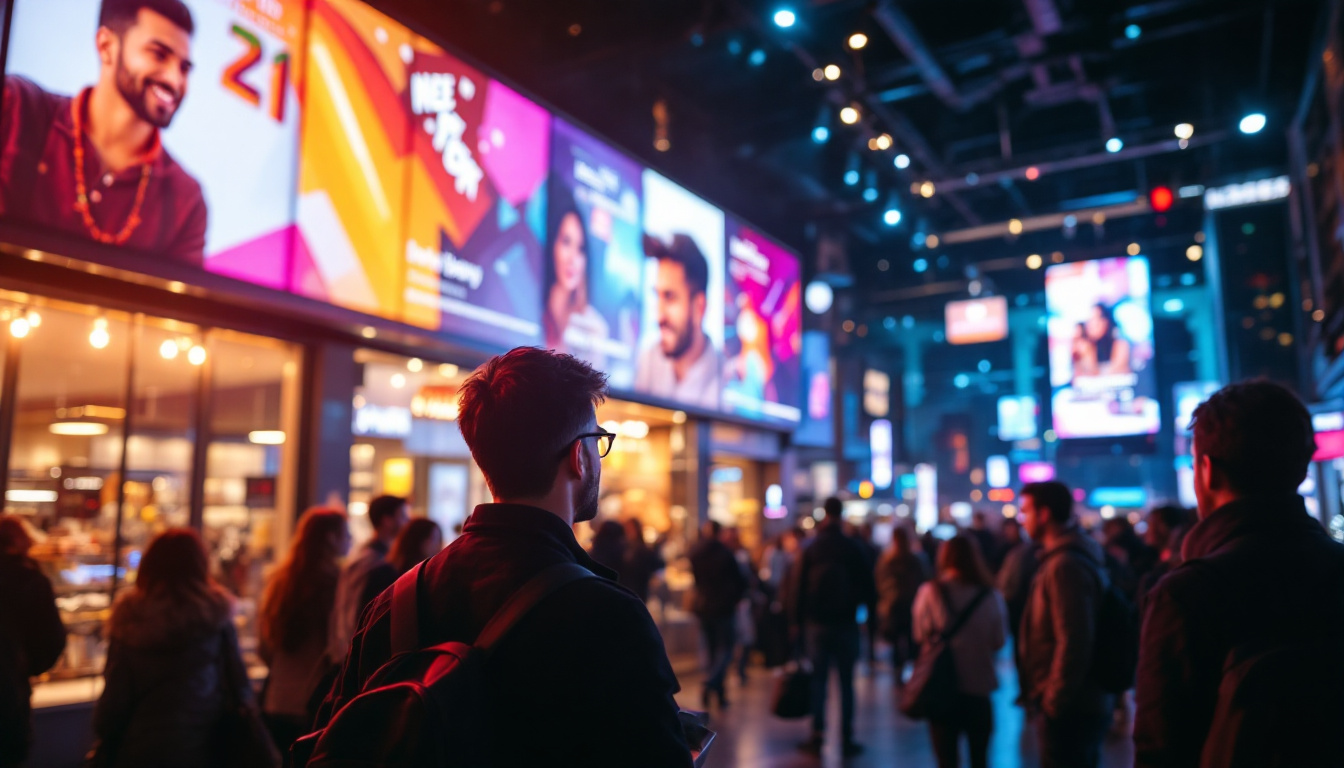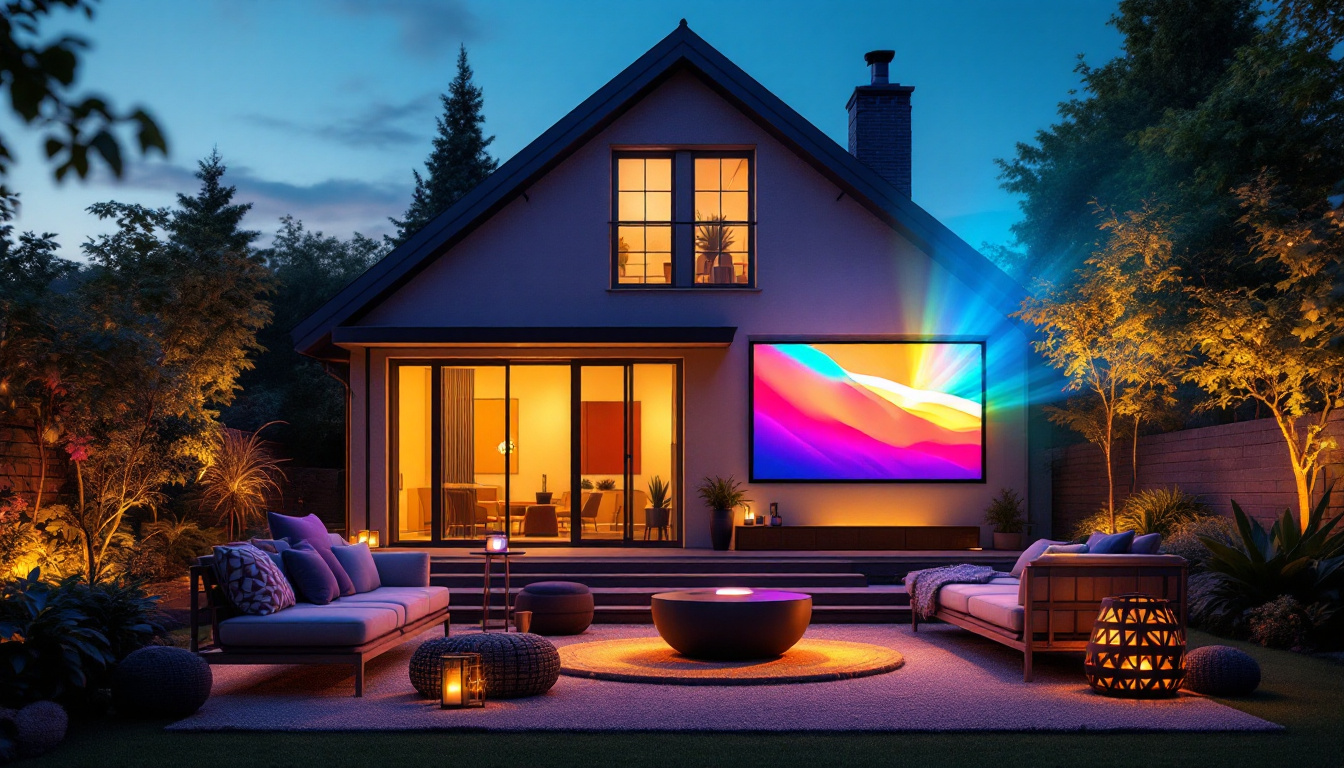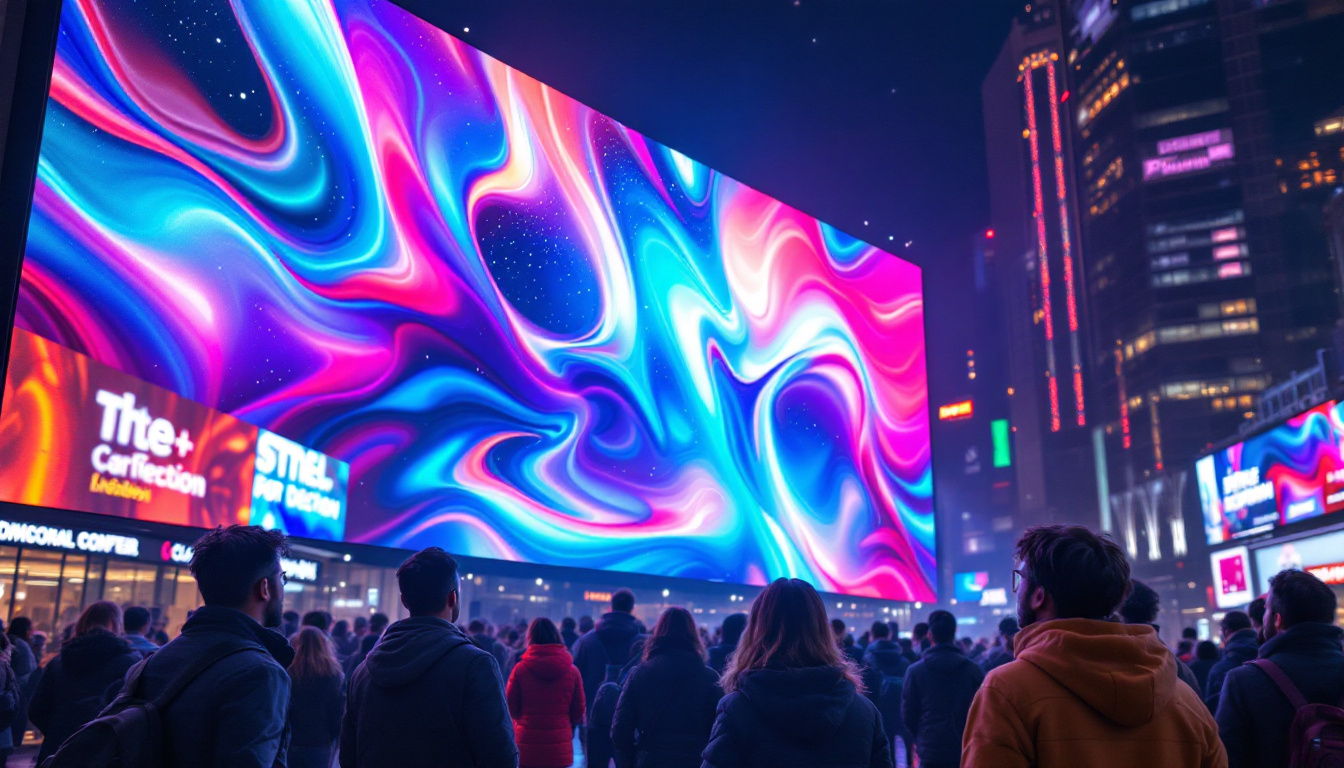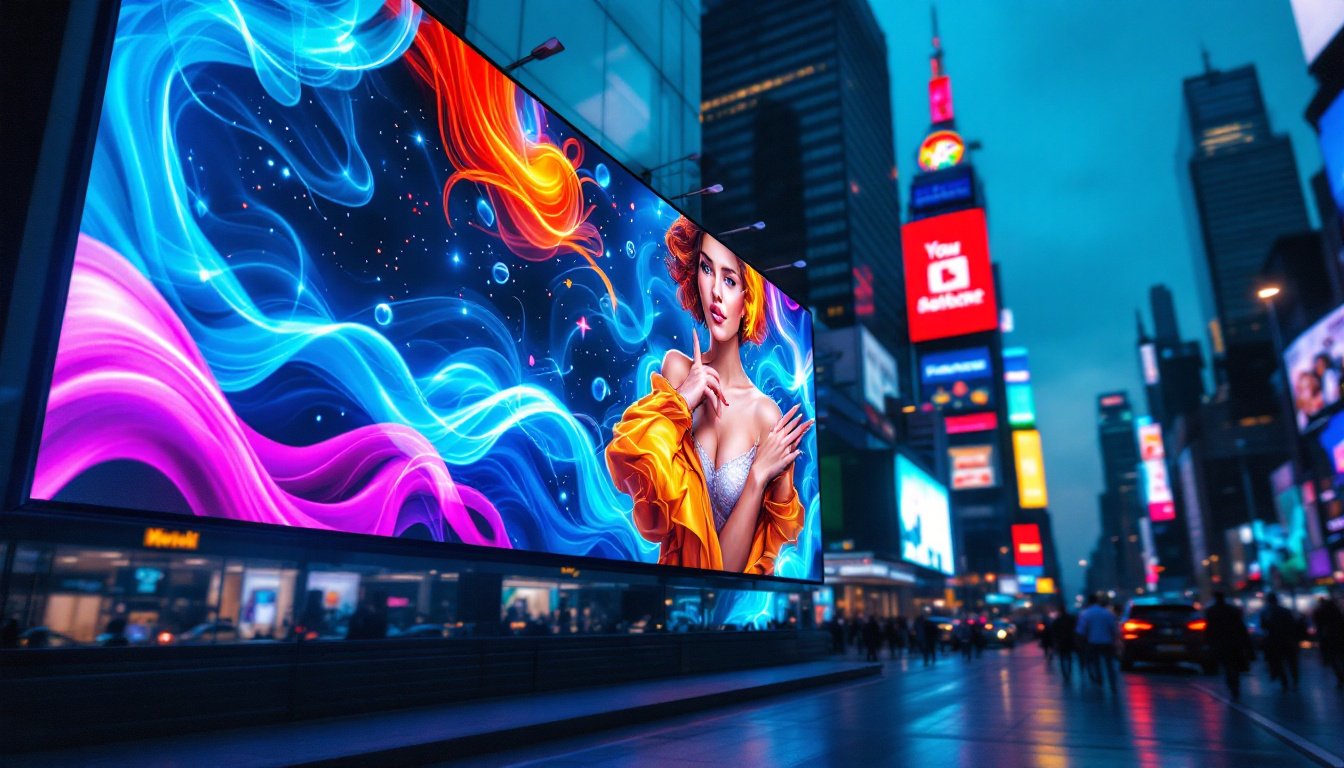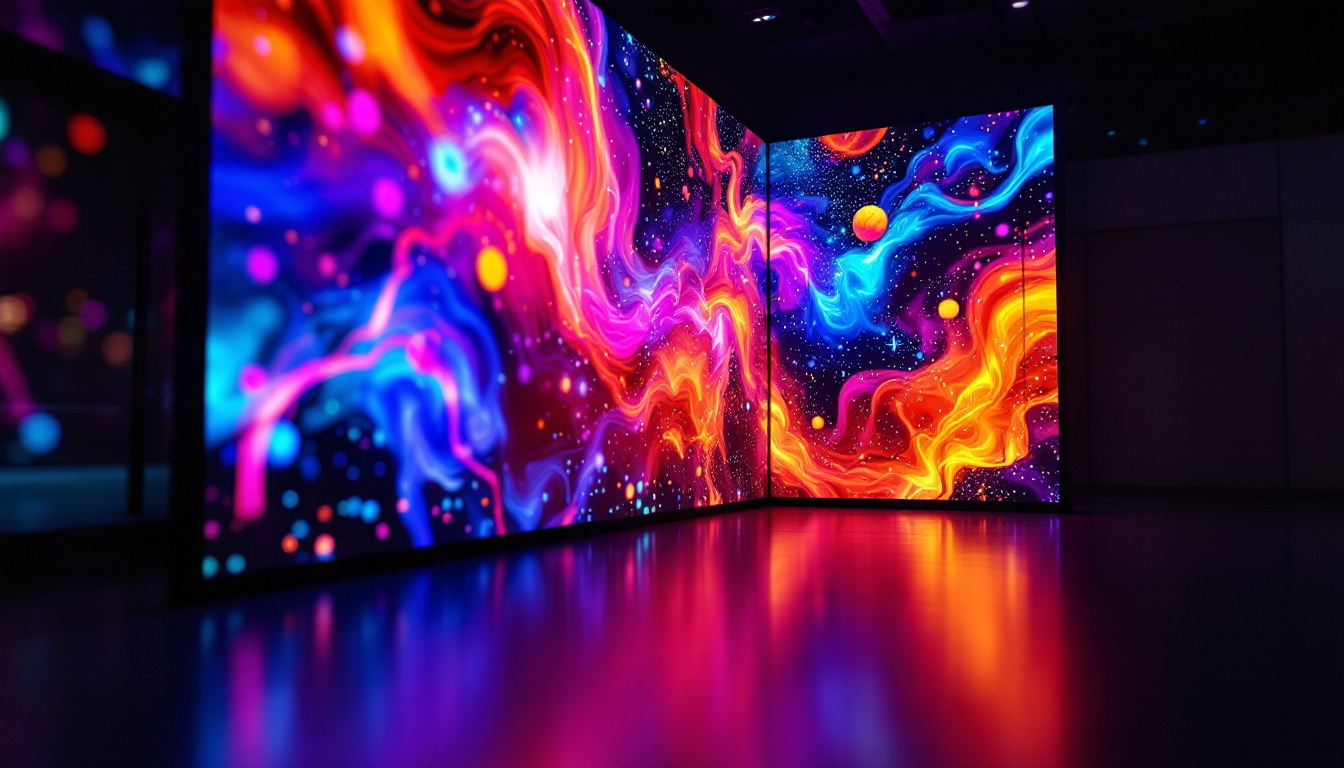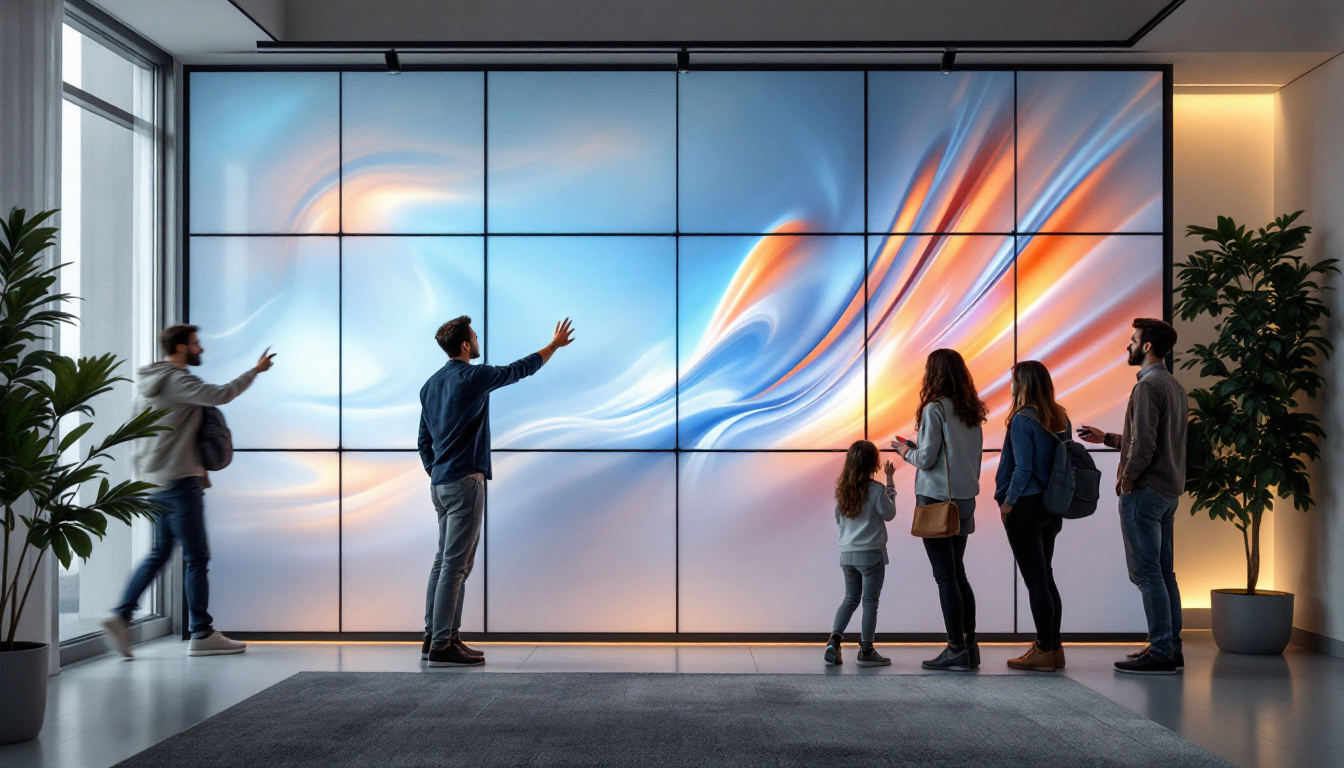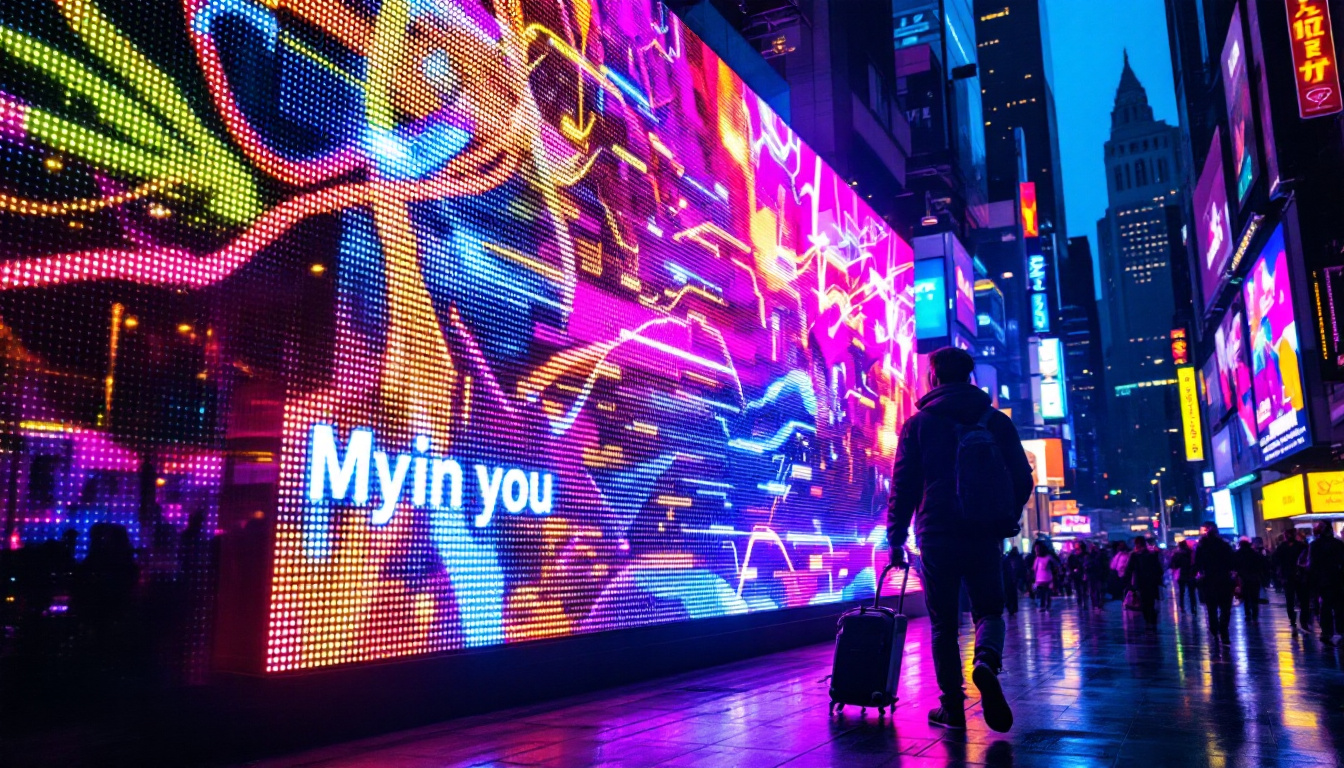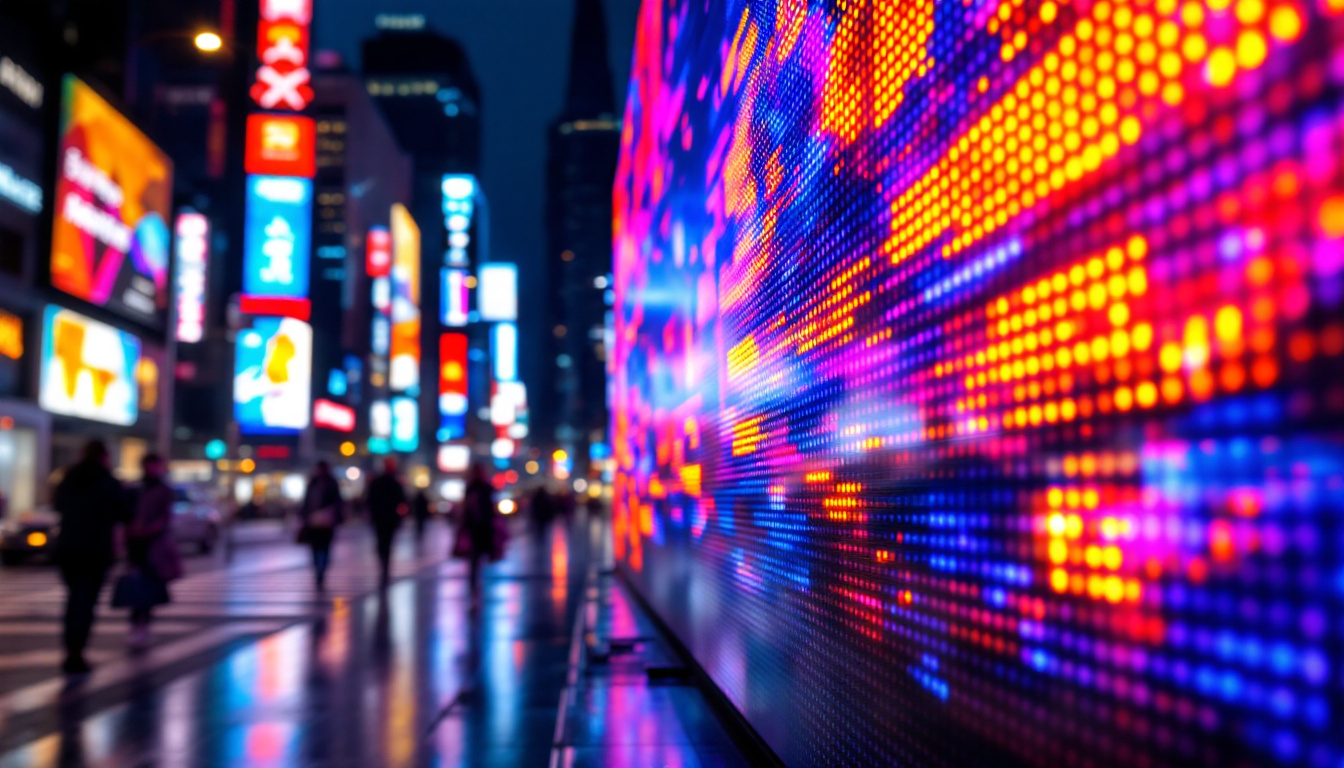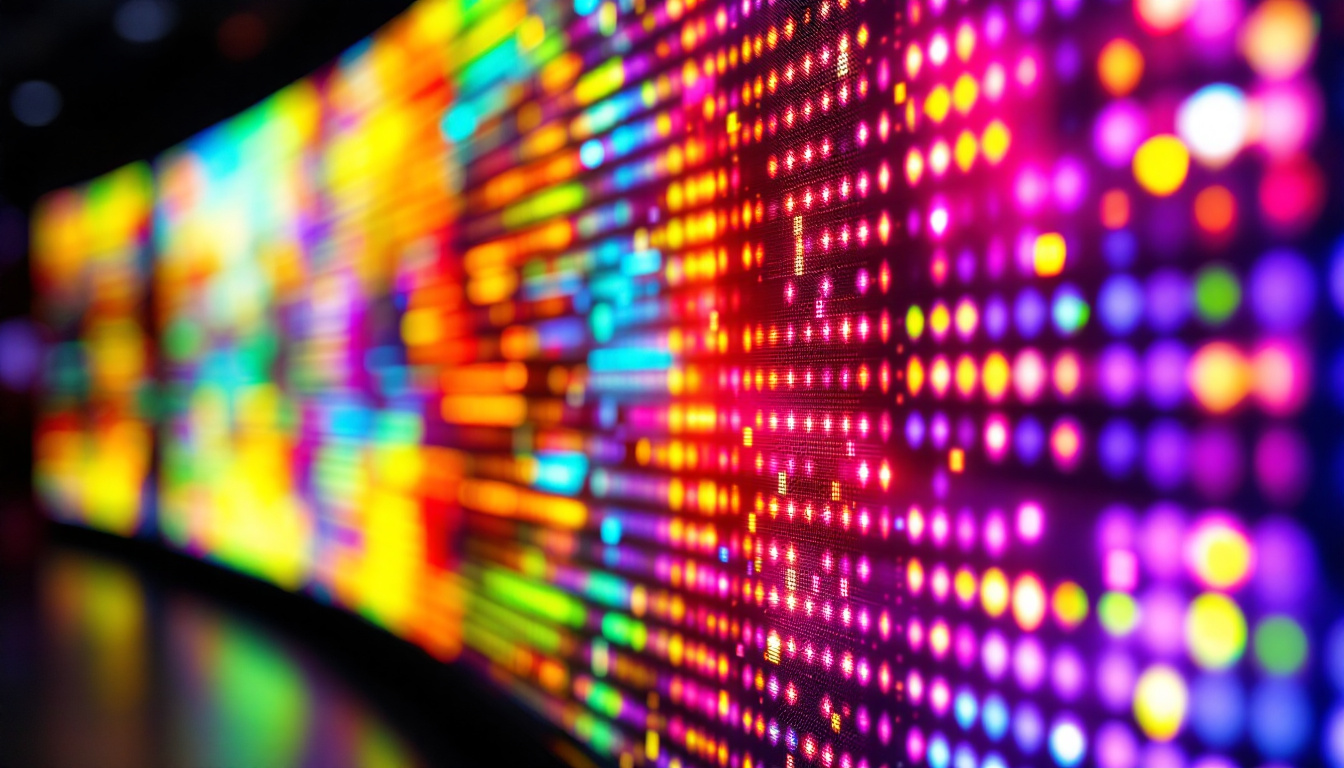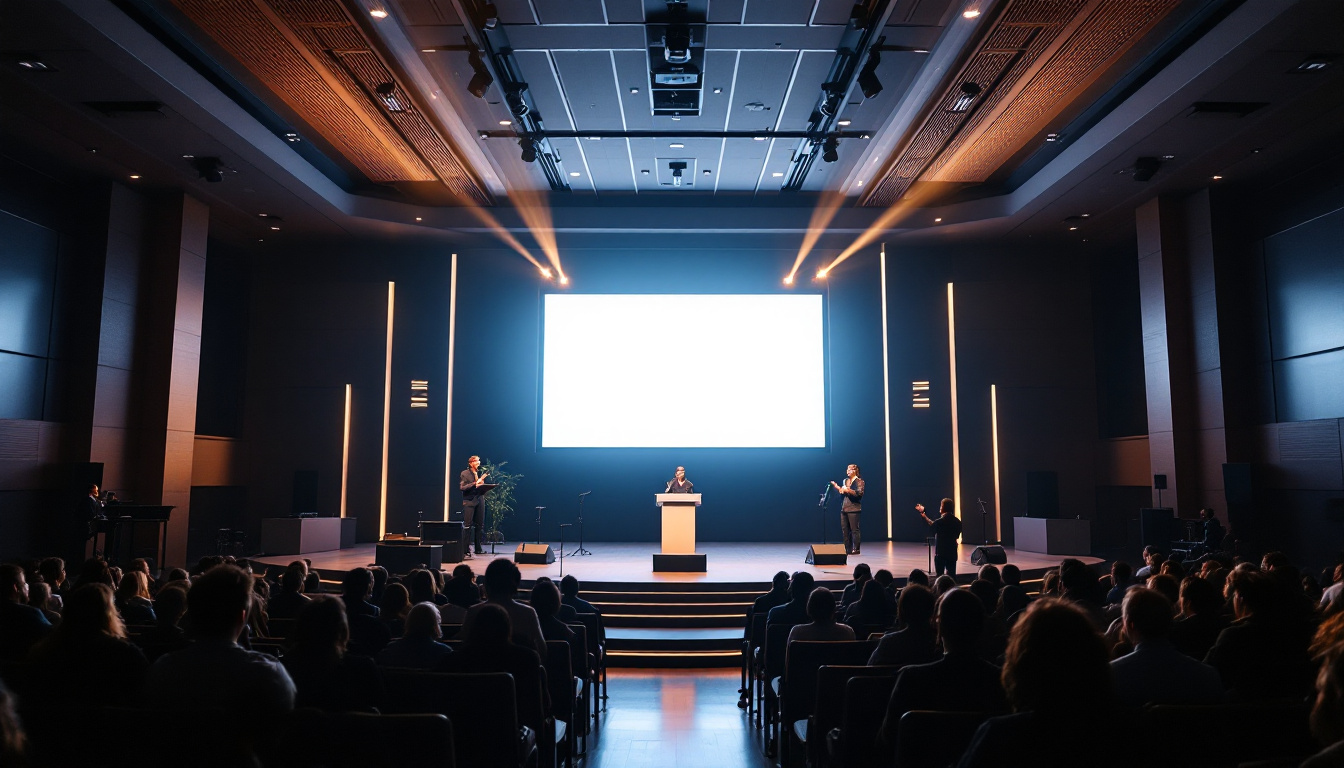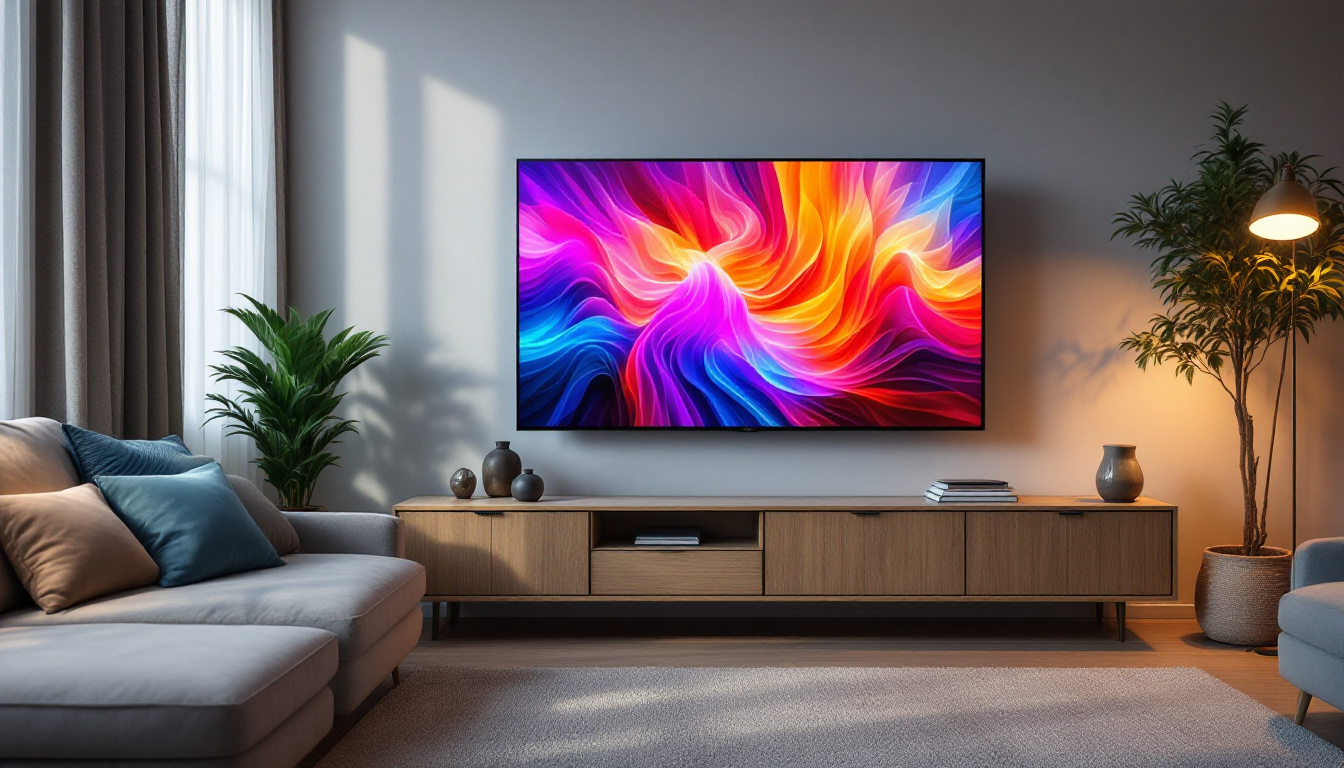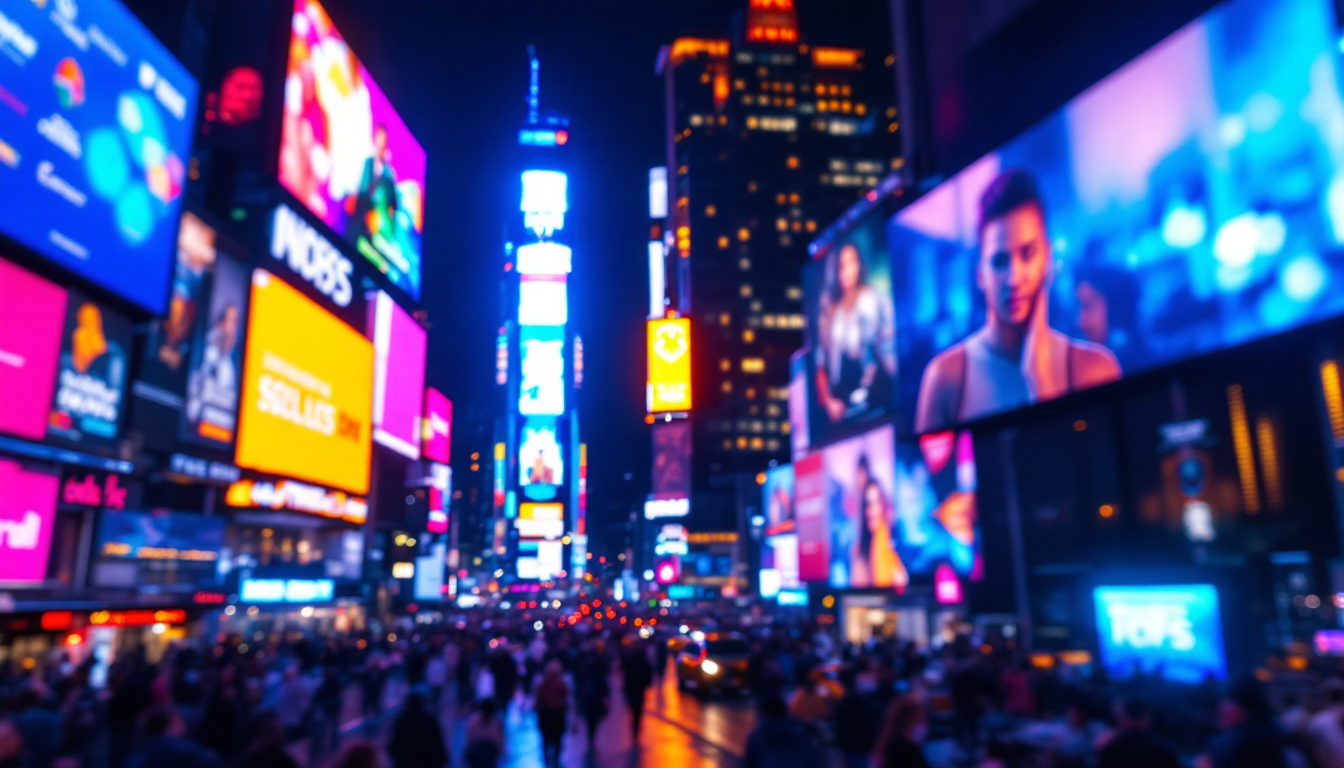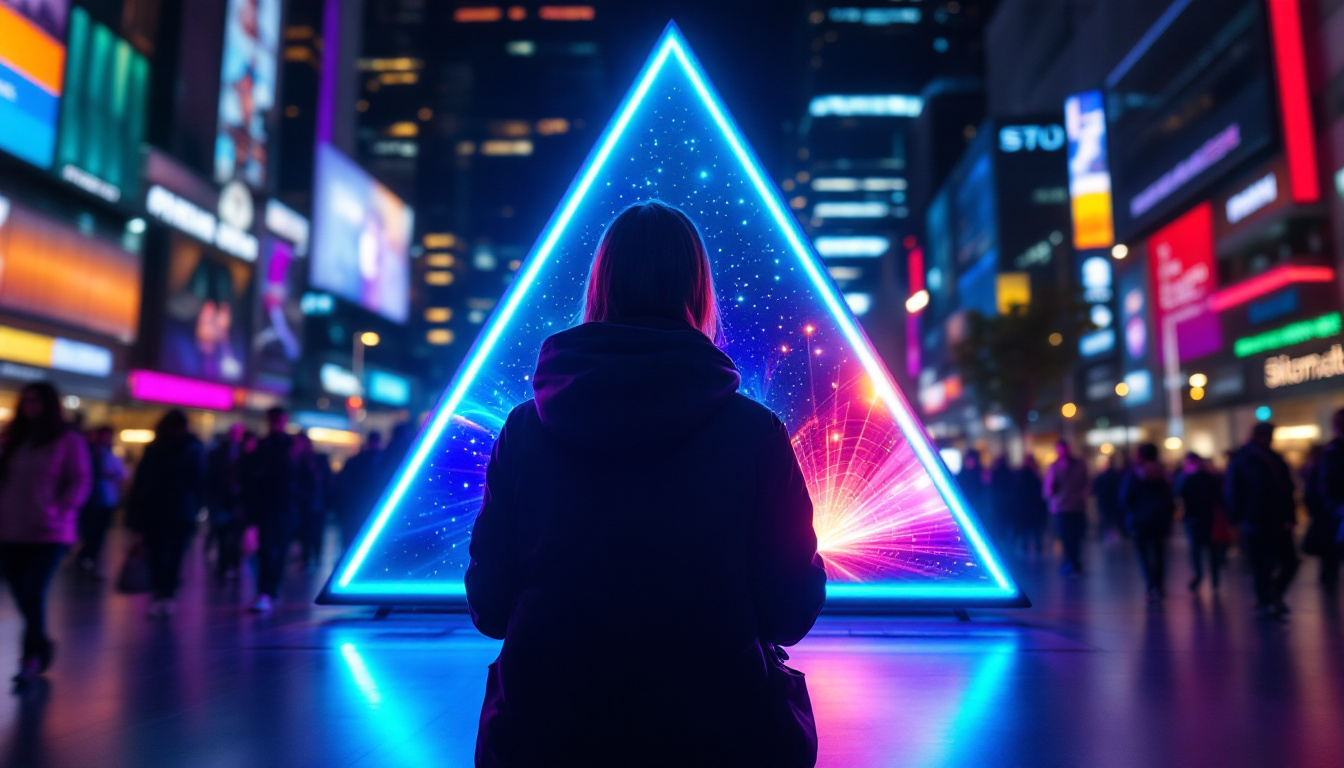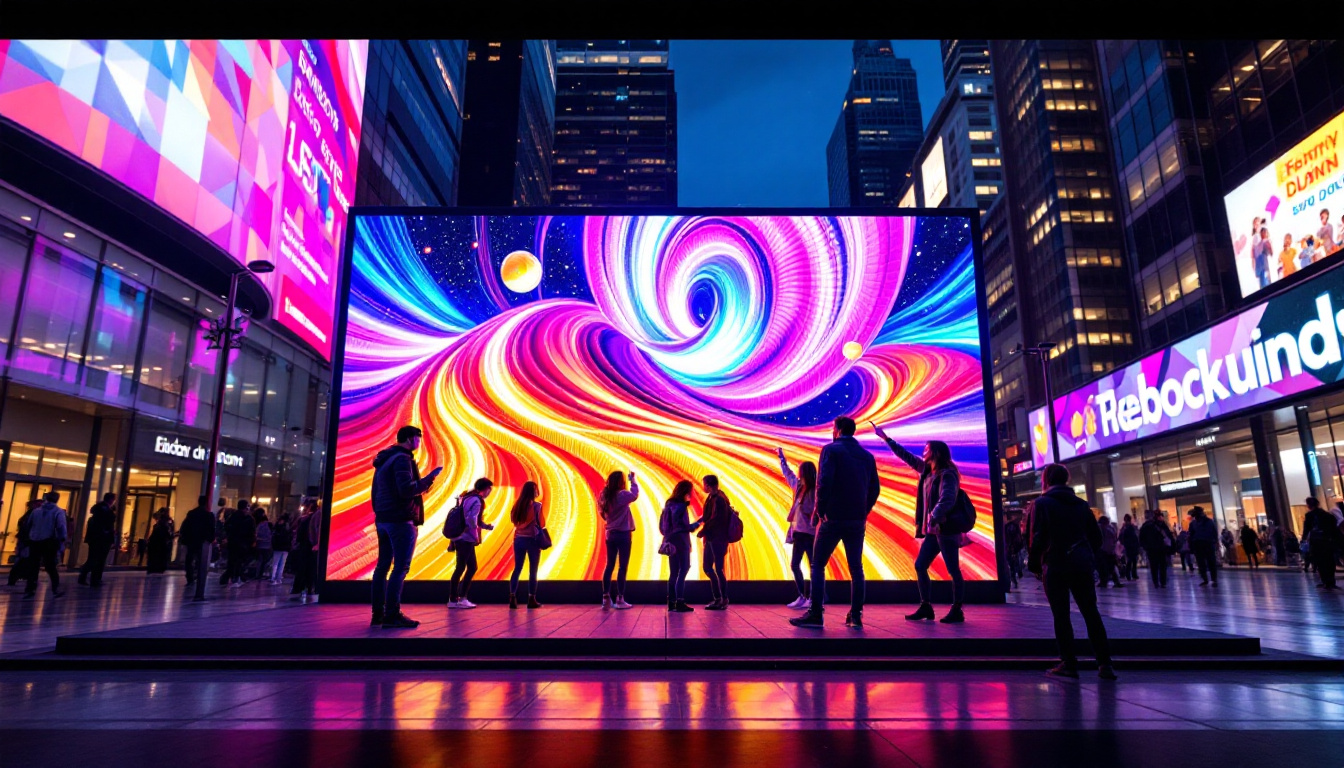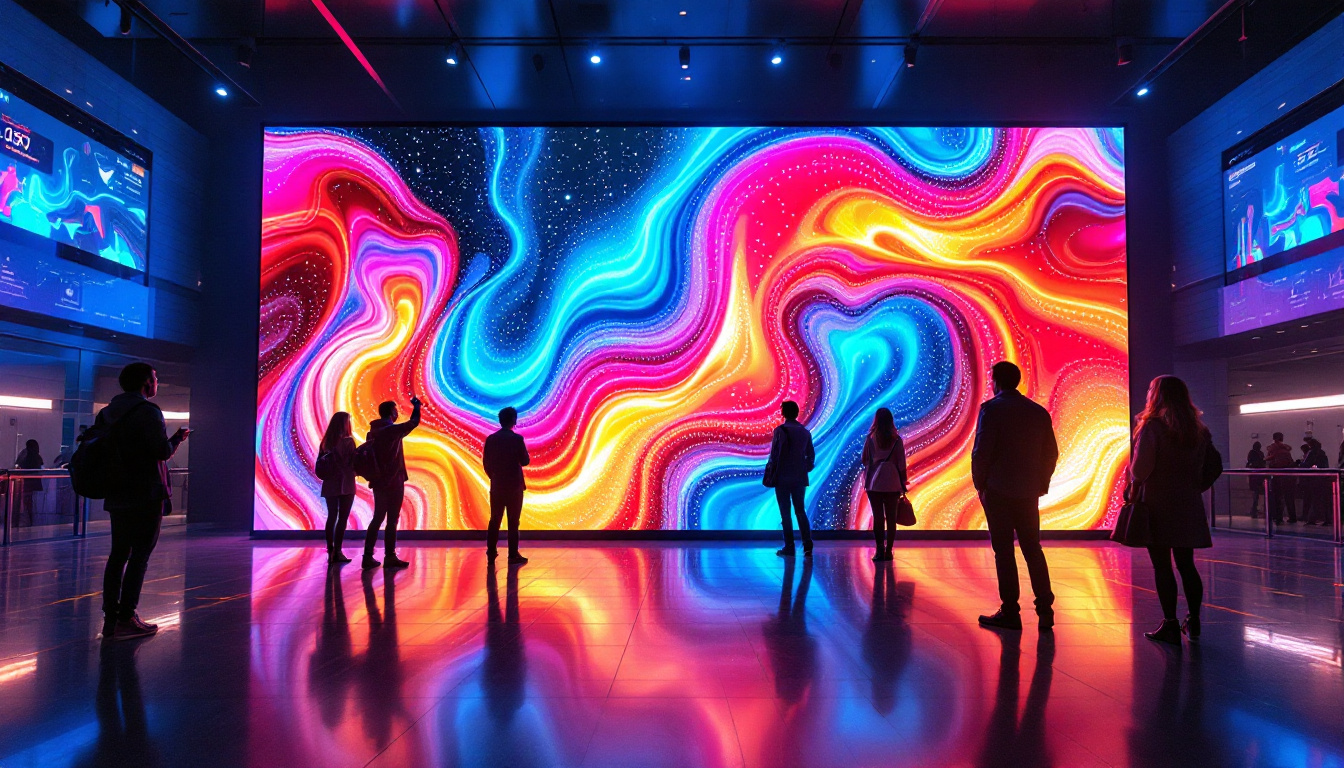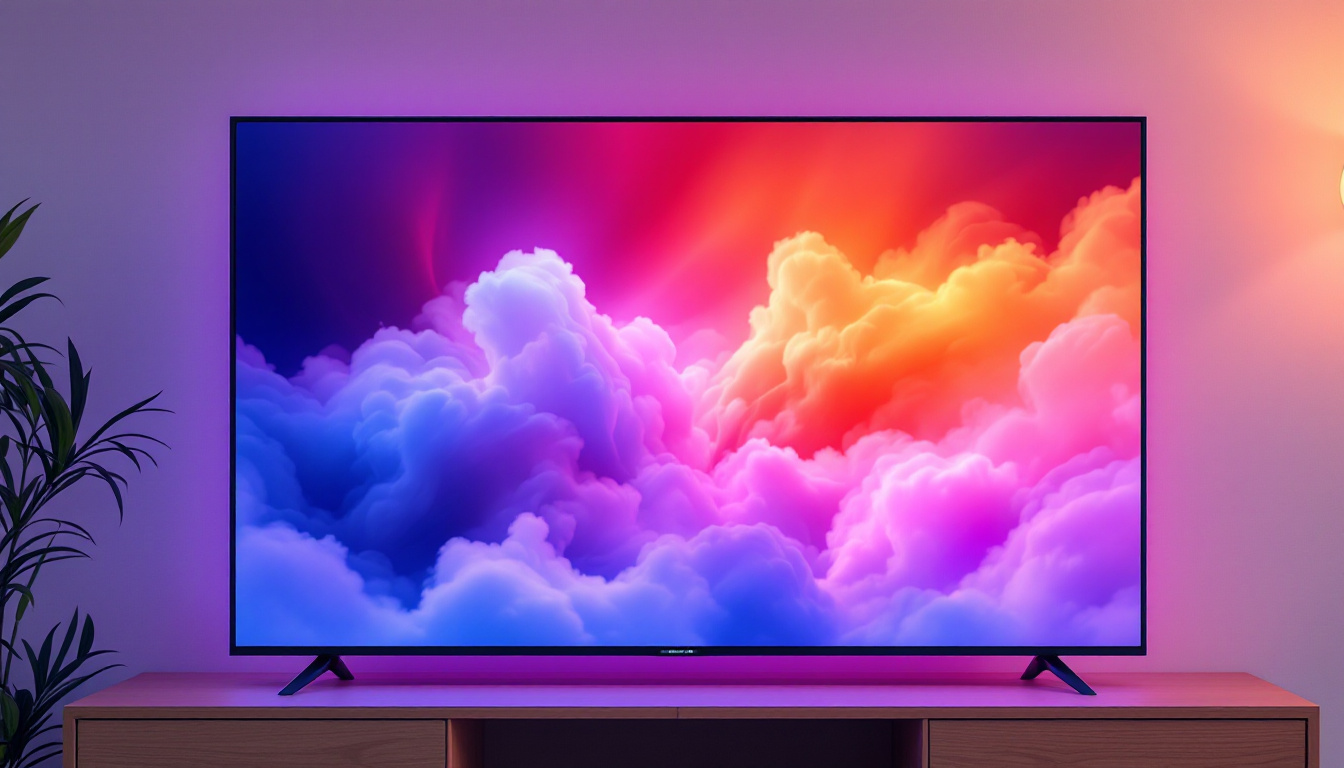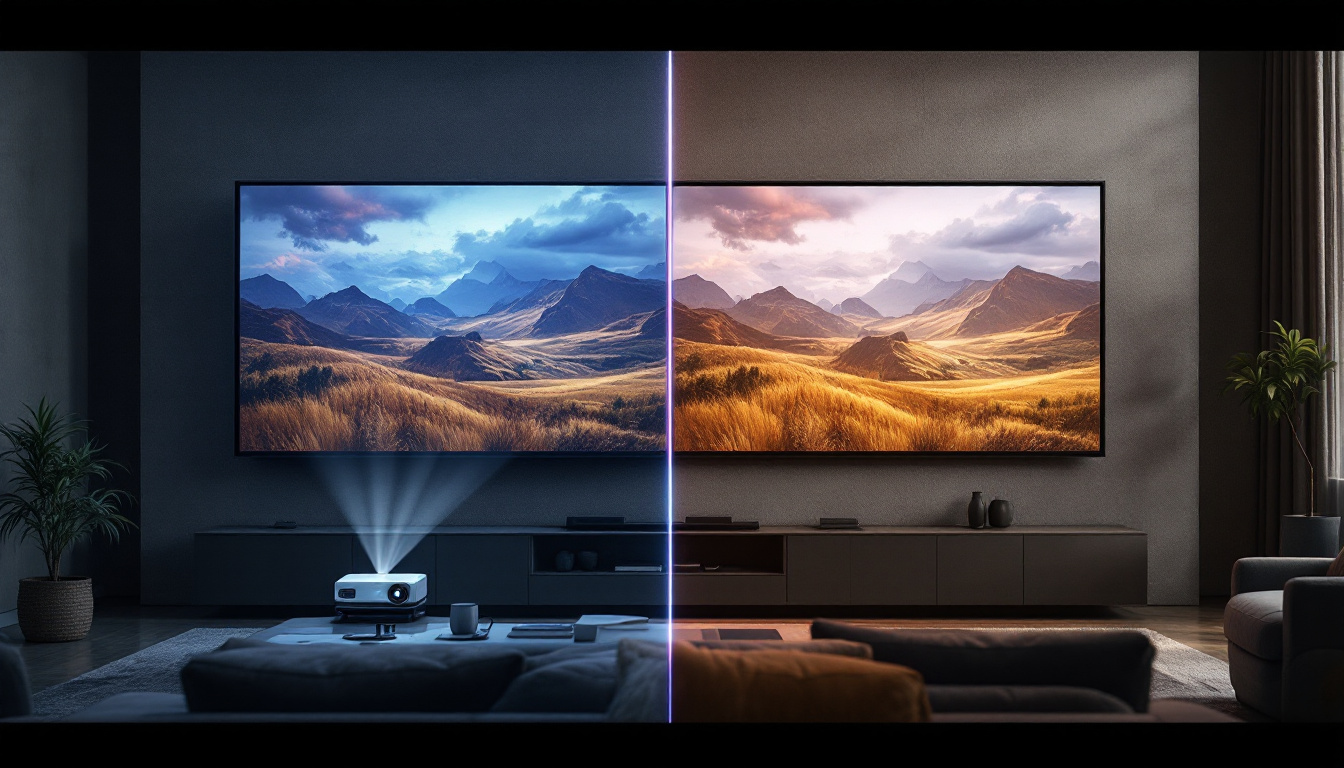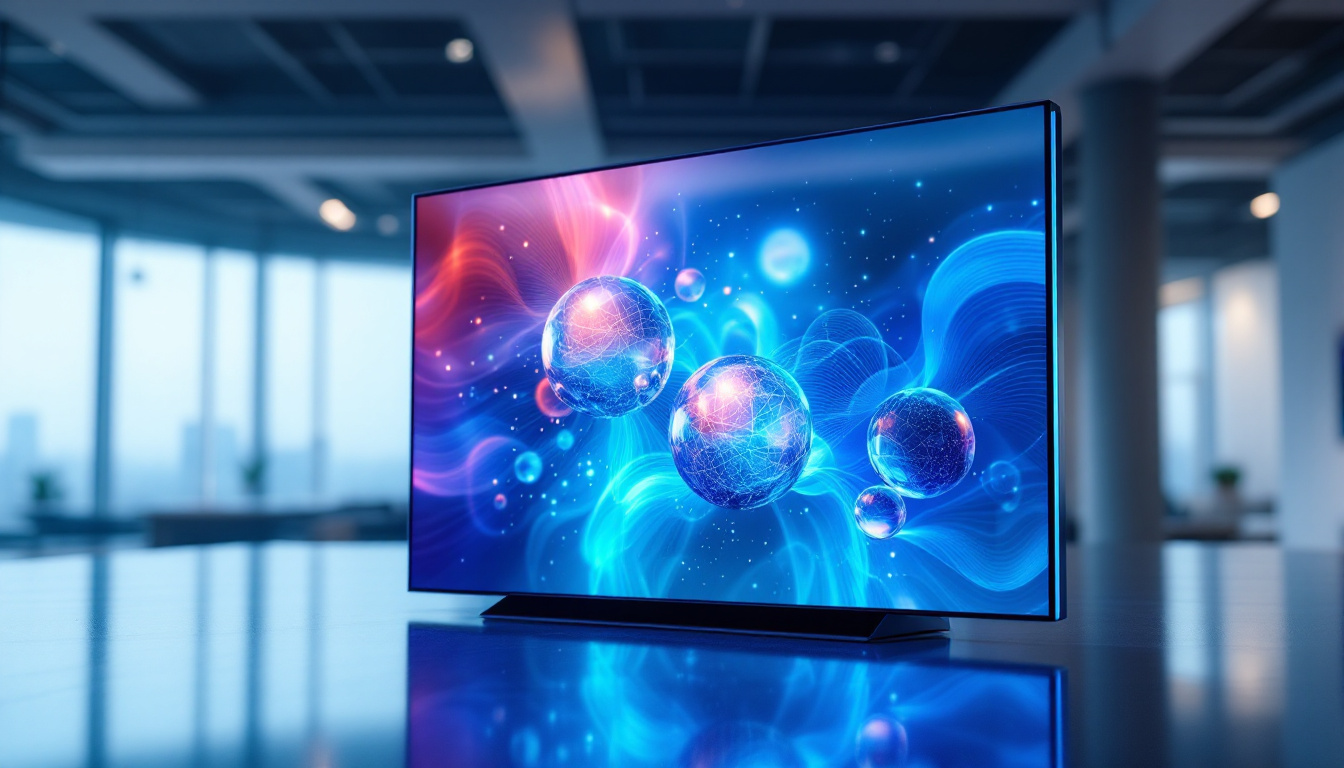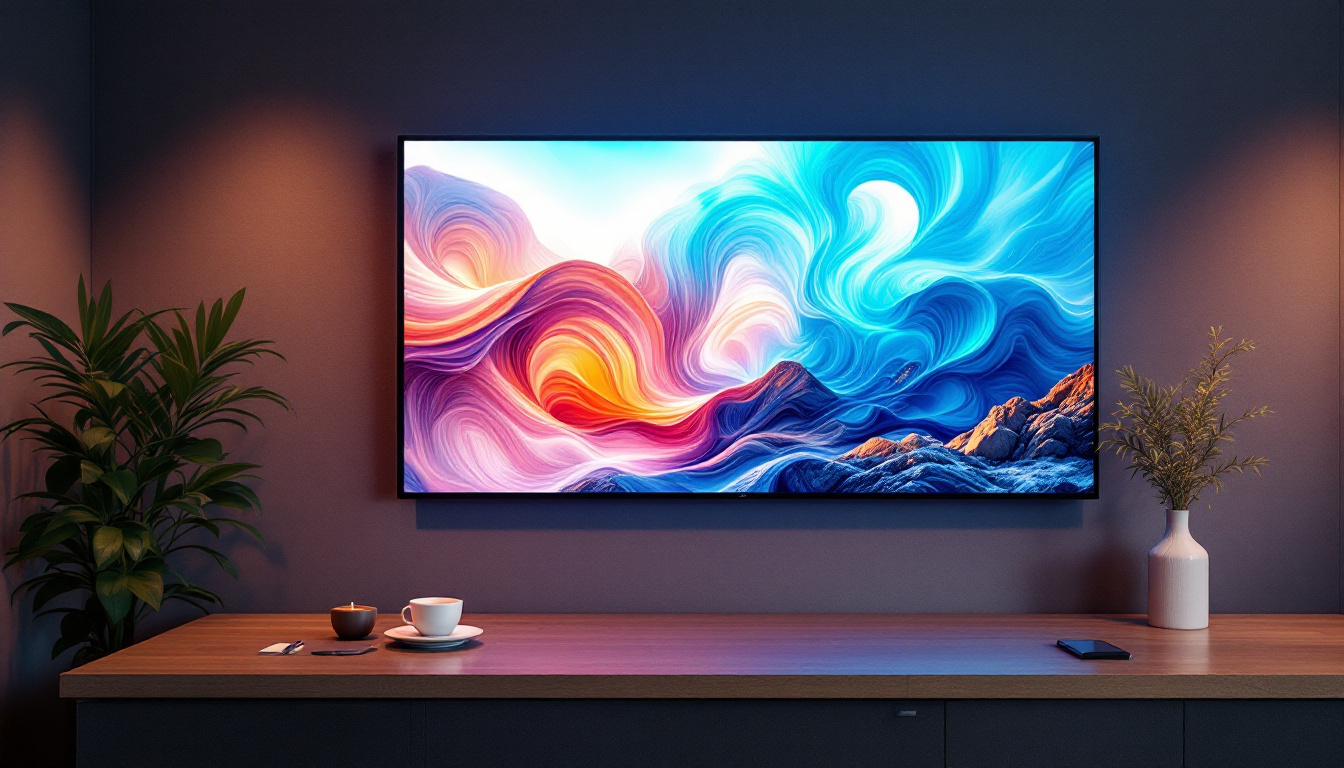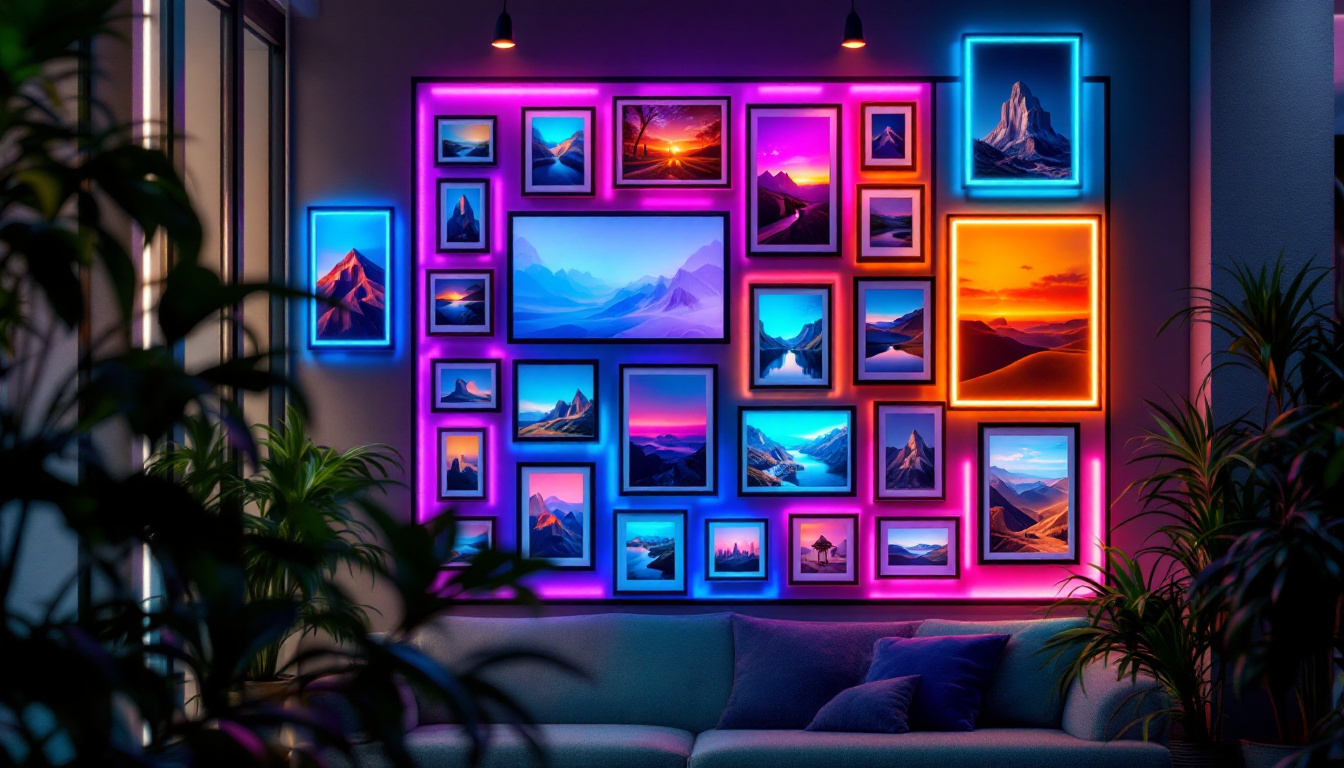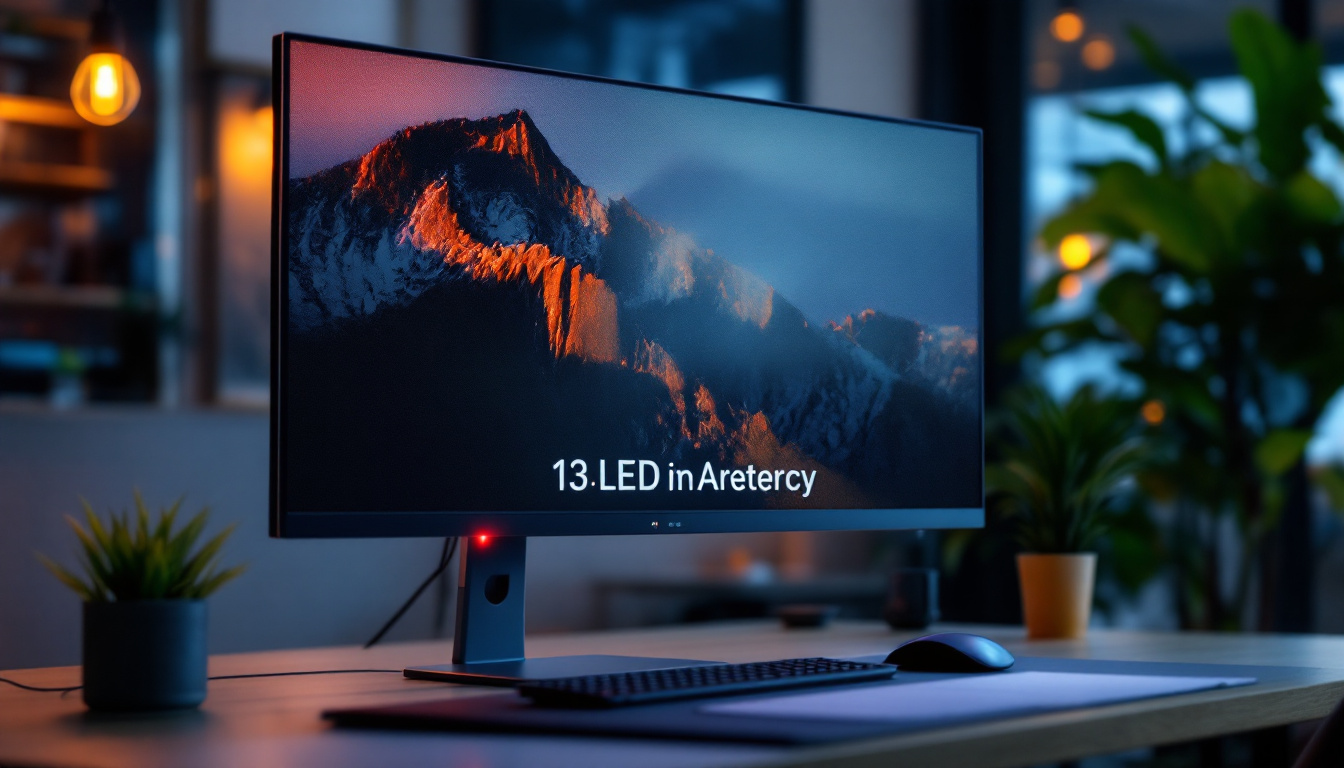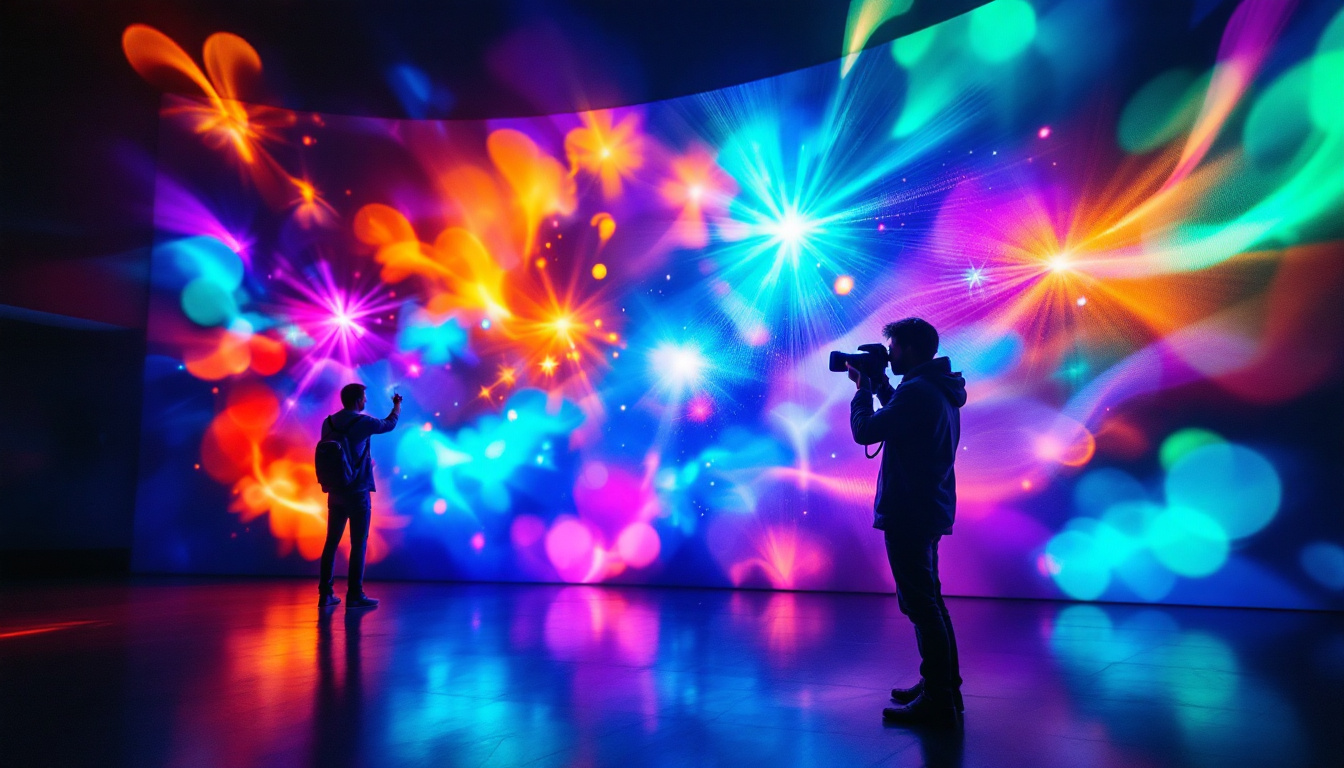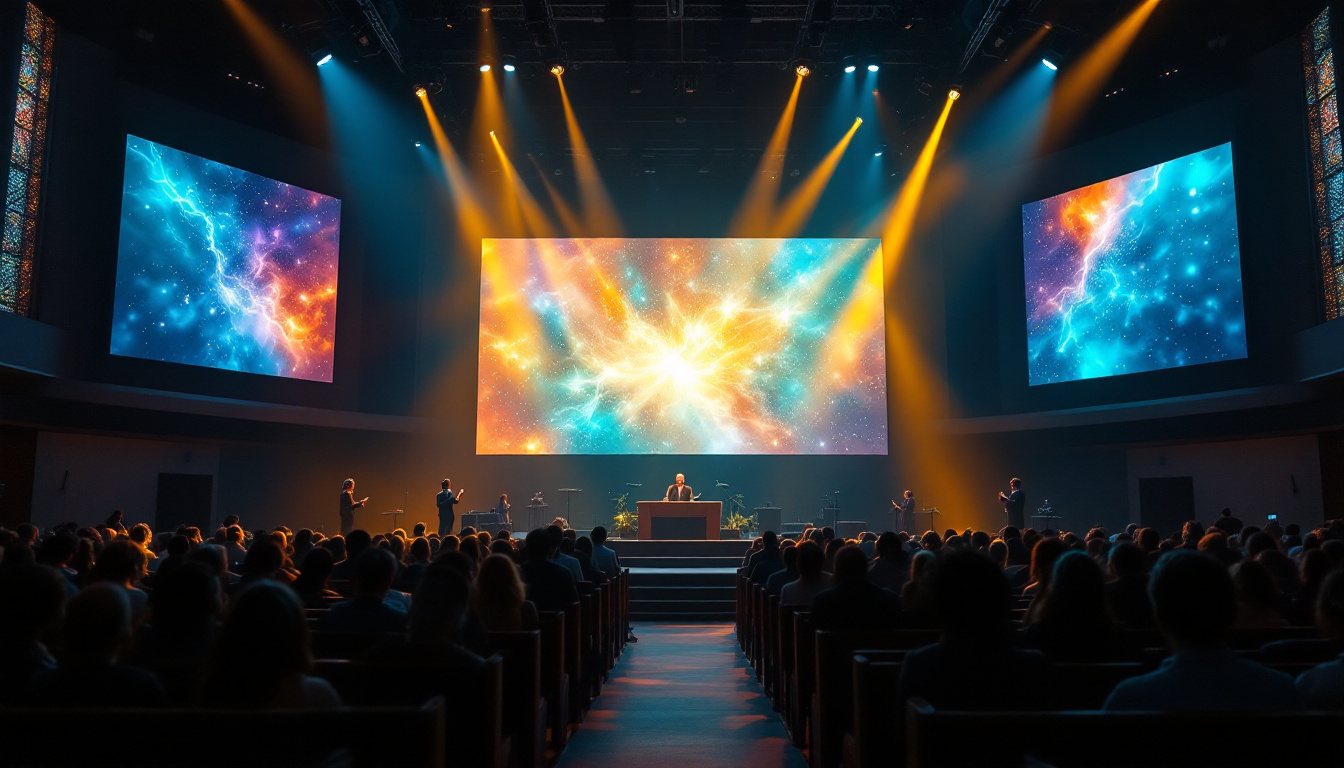In the fast-paced world of advertising, capturing attention is paramount. One of the most effective ways to do this is through the use of LED display screens. These vibrant, dynamic displays have revolutionized the indoor advertising landscape, offering businesses a powerful medium to engage customers. This article delves into the intricacies of LED display screens, their benefits, applications, and the technology behind them.
Understanding LED Display Technology
LED, or Light Emitting Diode, technology has transformed the way visual information is presented. Unlike traditional displays, LED screens utilize thousands of tiny diodes that emit light when an electric current passes through them. This technology allows for brighter, more vivid images and videos, making them ideal for advertising purposes. The efficiency of LED displays also contributes to their growing popularity, as they consume less power compared to older technologies like LCD and plasma screens, resulting in lower operational costs for businesses.
How LED Displays Work
At the core of LED display technology is the concept of pixelation. Each pixel on an LED screen is made up of red, green, and blue (RGB) diodes. By varying the intensity of these colors, a wide spectrum of colors can be produced. The combination of these pixels creates stunning visuals that can be easily seen from a distance, making them particularly effective in crowded indoor environments. Additionally, advancements in LED technology have led to the development of high-resolution displays, which offer greater pixel density and sharper images, enhancing the overall viewing experience.
Moreover, LED displays can be designed in various sizes and shapes, allowing for flexibility in installation. Whether it’s a large wall-mounted screen in a shopping mall or a smaller display in a retail store, the adaptability of LED technology ensures that businesses can find the perfect fit for their advertising needs. This versatility extends to the ability to create curved or irregularly shaped displays, which can be tailored to fit unique architectural designs and enhance the aesthetic appeal of a space.
Types of Indoor LED Displays
Indoor LED displays come in several types, each suited for different applications. The most common types include:
- Direct View LED Displays: These are large screens that display content directly without any additional layers. They are often used in large venues like arenas and concert halls, where high brightness and clarity are essential for engaging audiences.
- LED Video Walls: Composed of multiple smaller LED panels, video walls can create a larger display area. They are ideal for events and exhibitions where dynamic content is required, allowing for seamless transitions and captivating presentations that draw in viewers.
- LED Signage: Smaller and more versatile, these displays are commonly used in retail environments and for informational purposes. They can be programmed to showcase promotions, announcements, or even interactive content, making them a valuable tool for enhancing customer engagement.
In addition to these common types, there are also specialized LED displays designed for specific environments. For example, transparent LED displays are becoming increasingly popular in retail settings, allowing for eye-catching advertisements while still permitting visibility through the glass. Similarly, flexible LED screens can be bent and shaped to fit unconventional spaces, providing creative solutions for modern advertising challenges. As technology continues to evolve, the potential applications for LED displays seem limitless, promising even more innovative ways to capture attention and convey messages effectively.
Benefits of Using LED Displays for Indoor Advertising
LED displays offer numerous advantages over traditional advertising methods. Their unique features make them an appealing choice for businesses looking to enhance their marketing strategies.
High Visibility and Brightness
One of the standout features of LED displays is their exceptional brightness. Unlike conventional screens, LED technology provides high luminance, ensuring that advertisements are visible even in well-lit environments. This capability is crucial for indoor spaces such as shopping malls, airports, and exhibition halls, where ambient light can diminish the effectiveness of traditional signage. Furthermore, the vibrant colors produced by LED displays can evoke emotions and draw in potential customers, creating a more immersive advertising experience. This heightened visibility not only captures attention but also reinforces brand recognition, making it easier for consumers to recall the advertised products or services.
Dynamic Content Capabilities
LED displays are not just static images; they can showcase dynamic content that captures attention. Businesses can easily update their advertisements, display videos, or even run live feeds. This flexibility allows for real-time marketing strategies, enabling brands to respond quickly to trends or events. The ability to change content frequently keeps the display fresh and engaging, encouraging customers to take notice. Moreover, interactive features can be integrated, allowing customers to engage directly with the display through touch or mobile devices. This interactivity not only enhances customer experience but also provides valuable data on consumer preferences and behaviors, which can be leveraged for future marketing campaigns.
Cost-Effectiveness and Longevity
While the initial investment in LED technology may be higher than traditional advertising methods, the long-term benefits can outweigh the costs. LED displays consume less energy than their counterparts, leading to lower electricity bills. Additionally, they have a longer lifespan, often lasting over 100,000 hours, which reduces the need for frequent replacements. This longevity makes them a cost-effective solution for businesses looking to maximize their advertising budget. Furthermore, the maintenance of LED displays is generally straightforward, with many models designed to be easily serviced, minimizing downtime and ensuring that advertising efforts remain uninterrupted. As businesses increasingly prioritize sustainability, the energy efficiency of LED displays also aligns with eco-friendly initiatives, making them an attractive option for environmentally conscious brands.
Applications of Indoor LED Displays
The versatility of LED displays means they can be utilized across various industries and settings. Their applications are as diverse as the businesses that use them.
Retail Environments
In retail, LED displays serve as powerful marketing tools. They can be used to showcase promotions, highlight new products, or provide information about sales events. The ability to display vibrant visuals helps to attract customers and enhance their shopping experience. Additionally, LED displays can be strategically placed near checkout areas to encourage impulse purchases.
Corporate Settings
Businesses often use LED displays in corporate environments for presentations, meetings, and internal communications. These screens can display important information, such as company updates or performance metrics, in a visually appealing manner. Furthermore, they can enhance the aesthetics of an office space, creating a modern and engaging atmosphere.
Events and Exhibitions
During events and exhibitions, LED displays play a crucial role in attracting attendees. They can be used to create immersive experiences, showcasing products or services through engaging video content. Additionally, LED displays can serve as a platform for live social media feeds, allowing brands to interact with their audience in real-time.
Choosing the Right LED Display
When selecting an LED display for indoor advertising, several factors should be considered to ensure the best fit for specific needs.
Resolution and Pixel Pitch
The resolution of an LED display is determined by its pixel pitch, which refers to the distance between pixels. A smaller pixel pitch results in higher resolution and sharper images, making it ideal for close viewing. Conversely, a larger pixel pitch may be suitable for displays viewed from a distance. Businesses should assess their viewing distance and content type to choose the appropriate resolution.
Size and Configuration
LED displays come in various sizes and configurations. The choice of size should align with the intended location and purpose. For instance, a large video wall may be suitable for a spacious retail environment, while a smaller display might be more appropriate for a boutique store. Additionally, the configuration, whether a single screen or multiple panels, should be determined based on the desired visual impact.
Installation and Maintenance
Proper installation is crucial for optimal performance. Businesses should consider hiring professionals to ensure that the display is set up correctly and safely. Furthermore, regular maintenance is essential to keep the display functioning at its best. This includes cleaning the screens, checking connections, and updating software as needed.
Future Trends in Indoor LED Displays
The world of LED displays is continuously evolving, with new technologies and trends emerging regularly. Staying informed about these developments can help businesses leverage the latest advancements in their advertising strategies.
Integration with Smart Technology
As smart technology becomes more prevalent, the integration of LED displays with IoT (Internet of Things) devices is on the rise. This allows for more personalized advertising experiences, where content can be tailored based on audience demographics or behaviors. For example, a retail store could use data from customer interactions to display targeted advertisements on its LED screens.
Advancements in Energy Efficiency
With growing concerns about environmental sustainability, manufacturers are focusing on creating more energy-efficient LED displays. Innovations in technology are leading to displays that consume even less power while maintaining high brightness and quality. This not only reduces operational costs for businesses but also aligns with corporate social responsibility goals.
Enhanced Interactivity
The future of LED displays also includes enhanced interactivity. Touchscreen capabilities and integration with mobile devices can provide a more engaging experience for customers. This interactivity can lead to increased customer engagement and retention, making advertising efforts more effective.
Conclusion
LED display screens have become a cornerstone of indoor advertising, offering unparalleled visibility, dynamic content capabilities, and cost-effectiveness. Their versatility allows businesses to utilize them across various applications, from retail environments to corporate settings and events. As technology continues to advance, the potential for LED displays will only grow, making them an essential tool for any advertising strategy.
Investing in LED display technology can provide businesses with a competitive edge, enabling them to capture attention and engage customers in innovative ways. By understanding the technology, benefits, applications, and future trends, businesses can make informed decisions that enhance their advertising efforts and drive success.
Discover LumenMatrix’s Innovative LED Solutions
Ready to elevate your indoor advertising strategy with cutting-edge LED technology? LumenMatrix offers a comprehensive range of LED display modules designed to captivate your audience and amplify your message. From immersive Indoor LED Wall Displays to versatile All-in-One LED Displays and beyond, our solutions are crafted to revolutionize visual communication and engagement. Experience the transformative power of LumenMatrix’s LED display solutions and take the first step towards redefining your brand’s visual impact. Check out LumenMatrix LED Display Solutions today and see the difference innovation can make.

